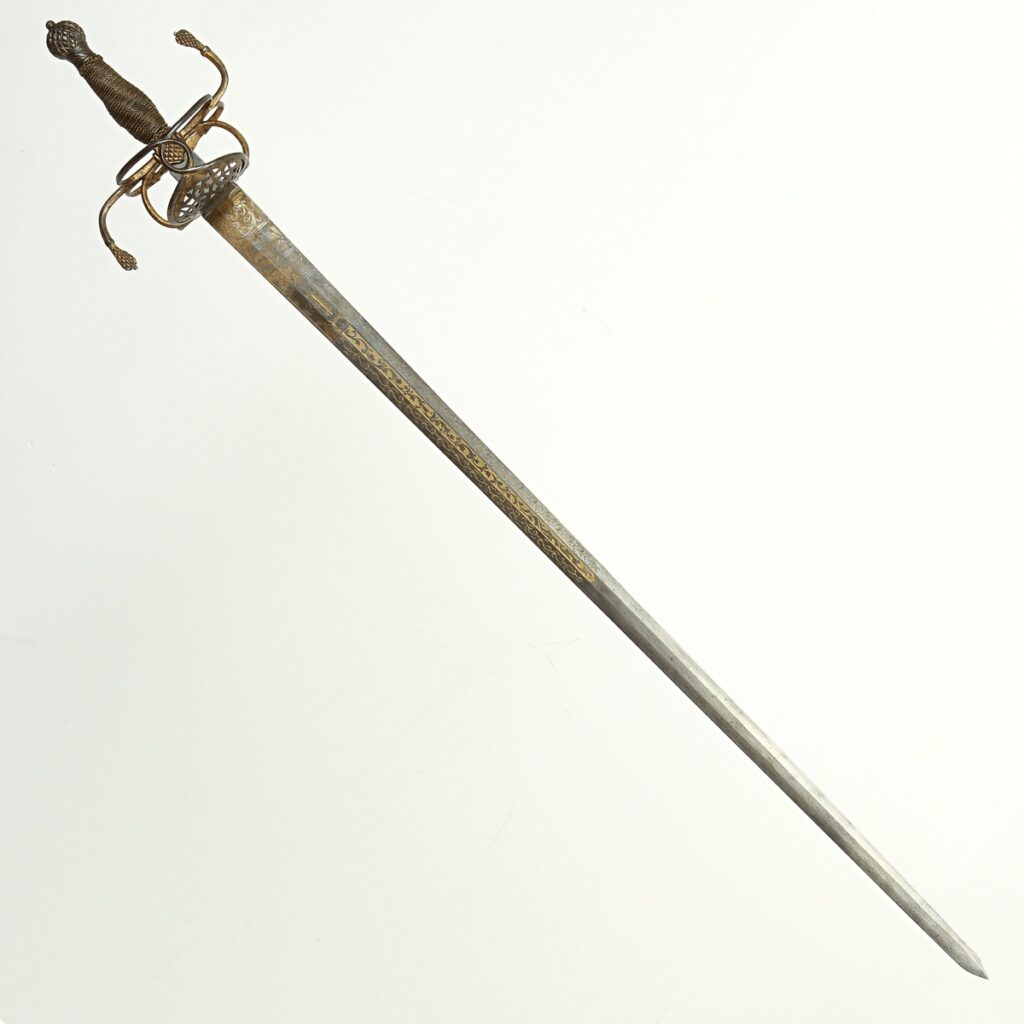
03 Sword, Central Europe, 2nd half of 16th century
Fotogalerie



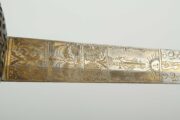
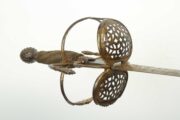
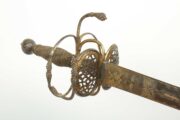
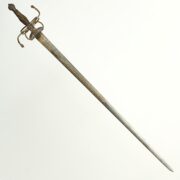
At the same time, as the guards of cavalry swords changed and developed, the grip started to get shorter, often spirally grooved and wrapped with braided wires. This gave rise to the classic Renaissance sword where the guards were given new side-arms over time, attaching to or extending from a knuckle-gurad forming the front arm of the guard and curling towards the pommel of the hilt. This gave rise to the intricate basket-hilted swords, where it achieved a particular richness of form and definitely replaced the protective iron glove. This richness and intricacy of shape can be traced from the mid-16th century to the mid-17th century when cavalry swords were provided with baskets of more conservative shapes and baskets of a uniform type appeared in the individual regiments of standing armies.
The blade of this magnificent sword is straight, double-edged, low hexagonal in cross-section, with a central point. One half of the blade is decorated on both sides with gilt engraving and chased ornamentation on gilded ground. Individual fields below the guard depict acanthus rinceau, a fountain, a shining sun and a hand with a sword. The wooden grip is spirally wrapped with coiled wire of yellow metal. The iron parts are gilded in fire. The spherical pommel is decorated with a rouletted embossed cut and finished with flattened grapes. The S-shaped guard is connected by lower and lateral side-arms to the lower counter-guard, decorated with incised ornamentation. The whole hilt bears unevenly preserved traces of gilding.
Length 1135 mm, blade length 917 mm, blade width 40 mm, weight 980 mm.
Aktuálně

Českoslovenští zdravotníci ve válce v Zálivu

Výzkum u českých krajanů v Chorvatsku

Československý deník sehrál v životě legionářů v Rusku velmi důležitou roli. Poprvé vyšel v prosinci 1917

Děkujeme za podporu pro válečné veterány. Sbírka DiGiMÁK vynesla 450 tisíc korun








